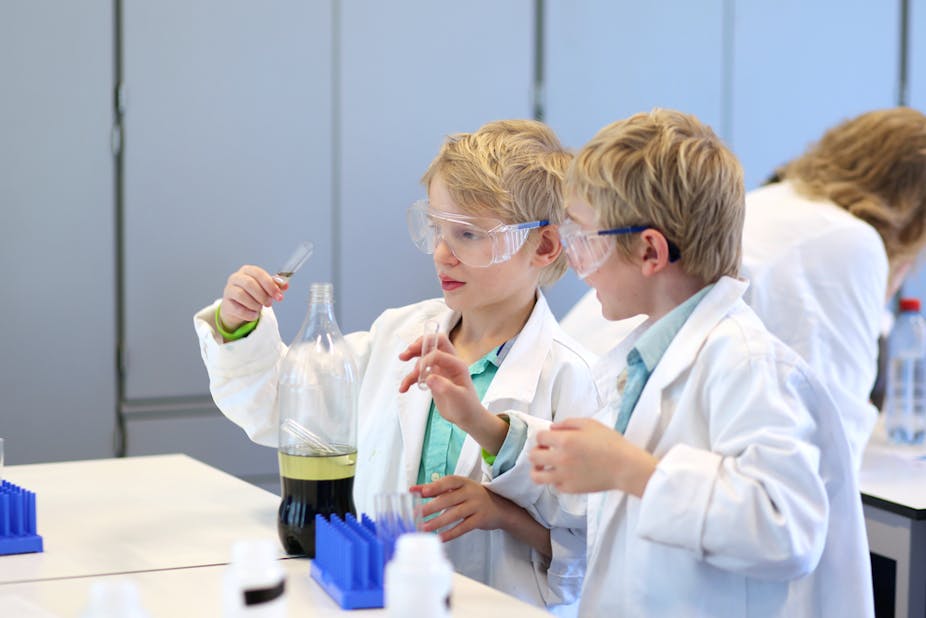Science is a core subject at primary school and is taught in every classroom. Yet the Royal Society has reported that only 3% of primary teachers have a degree in science and surveys have shown that they lack confidence in teaching it.
A new programme, called Thinking, Doing, Talking Science, that trains teachers to make science lessons more practical, creative and challenging has shown early promise in tackling the issue. A recent study shows that pupils taught by teachers who took the programme made about three months more progress in science attainment compared with pupils who were taught as usual. The children were also more enthusiastic about the subject.

After a previous promising evaluation, Oxford Brookes University and the charity Science Oxford developed the approach further and won funding from the Education Endowment Foundation for a more rigorous trial. The Institute for Effective Education at the University of York was appointed as the independent evaluator. The project involved two teachers from each of 42 primary schools in Oxfordshire, including all teachers of Year 5 pupils, aged from nine to ten.
In a randomised controlled trial, half the schools participated in the teacher training programme and half didn’t. The teachers in the intervention group received training in 2013-14 and the impact on their pupils was measured and compared with the pupils in the control group. All the Year 5 pupils (more than 1,200) in both the intervention and control schools took a science test at the beginning and end of that academic year, and also completed a survey of their attitude to science at the end of the year. The control schools received the training in 2014–15, after all the comparisons had been made.
Time for creativity and bright ideas
During the main stage of the project, there were five days of teacher training spread out over one year with the teachers from the intervention schools. These were designed to enable the teachers to develop dedicated discussion slots in science lessons. They were also trained in their understanding of appropriate and challenging science practical work, including investigations and problem solving.
They were trained in questioning skills to extend pupils’ thinking about scientific ideas, and the teachers were also encouraged to ask the pupils to record their work in a creative and very focused way, rather than writing down everything they had done in a lesson. For example, if the learning objective was on the skill of drawing conclusions from an investigation, then that was what was recorded. If it was a problem-solving activity, then labelled photographs of the steps taken might be the best method of recording what they had learned.
Teachers were not provided with a set of “off-the-shelf” lesson plans to be delivered in schools. Instead, they were supported to be more creative and thoughtful in planning their science lessons. The input was spread over a year to allow teachers to try out the suggested strategies with their pupils between sessions. In addition, each teacher had two days of supply cover over the course of the year to allow them to work with colleagues to plan and review lessons taught as part of the project.
Teachers were trained in a repertoire of strategies that aimed to encourage pupils to use higher order thinking skills, for example problem solving, thinking critically and analysing information to make new links.
The key features of the training were focused on the three main elements of thinking, talking and doing science. This included the use of a dedicated discussion slot, “the bright ideas time”, with specific prompts to stimulate pupils to talk. For example, pupils selected the odd one out from three objects, such as chocolate, water and paper, and explained their reasoning. Pupils were also asked “big questions”, such as: “How do you know that the Earth is a sphere?” or: “How do you know the person next to you is alive?” There is no single correct answer, so the pupils were encouraged to think deeply and creatively.
Another strategy was the use of “practical prompts for thinking” – short teacher demonstrations that are designed to intrigue pupils and act as discussion starters. An example is holding a balloon filled with water over a person’s head, putting a flame to the balloon and explaining why it does not burst.
There was an emphasis on pupils undertaking a variety of different types of science practicals, including problem solving and fair testing. The pupils focused their recording of what they had learned on the learning objectives, thus trimming the time spent writing and releasing the time for thinking, talking and doing. However, the recording was sharp and focused and so it remained useful as an assessment tool.
Positive attitudes
All the participating teachers felt they had changed the way they taught science, and were more positive about their pupils’ science ability and engagement than teachers in comparison schools. It was particularly encouraging that, in addition to performing better in the science tests, the pupils in classes following the approach had more positive attitudes towards several aspects of science.
As the graph above shows, they were more likely to strongly agree that science lessons were interesting, made them think and looked forward to class. Although most children believed it was important to learn science, this was particularly true for children in those schools that adopted the programme, where 70% believed it was important, compared to 57% in the control schools.
Bridget Holligan from Science Oxford also contributed to this article.

